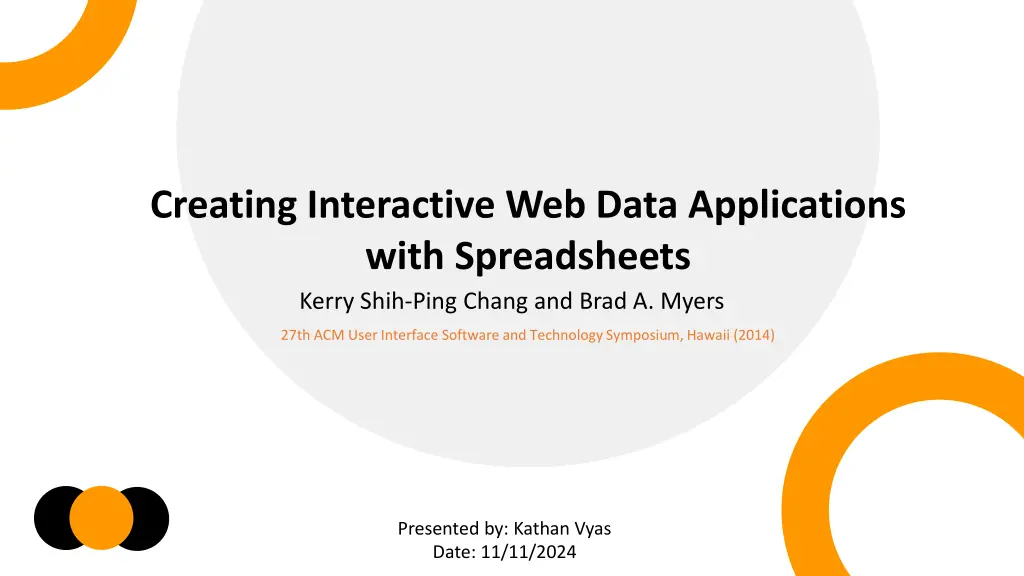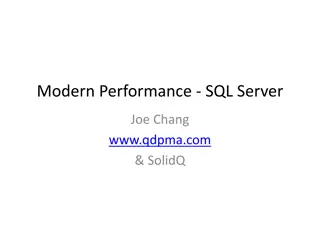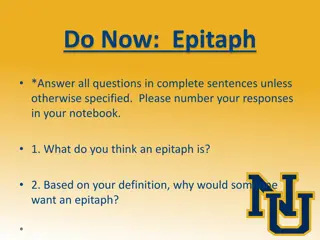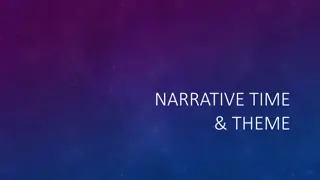
Interactive Web Data Applications with Gneiss: Empowering End-Users
Explore how Gneiss revolutionizes web data applications, offering a spreadsheet-based platform for non-programmers to build interactive interfaces seamlessly integrating backend data.
Download Presentation

Please find below an Image/Link to download the presentation.
The content on the website is provided AS IS for your information and personal use only. It may not be sold, licensed, or shared on other websites without obtaining consent from the author. If you encounter any issues during the download, it is possible that the publisher has removed the file from their server.
You are allowed to download the files provided on this website for personal or commercial use, subject to the condition that they are used lawfully. All files are the property of their respective owners.
The content on the website is provided AS IS for your information and personal use only. It may not be sold, licensed, or shared on other websites without obtaining consent from the author.
E N D
Presentation Transcript
Creating Interactive Web Data Applications with Spreadsheets Kerry Shih-Ping Chang and Brad A. Myers 27th ACM User Interface Software and Technology Symposium, Hawaii (2014) Presented by: Kathan Vyas Date: 11/11/2024
About Authors Kerry Shih-Ping Chang Brad A. Myers PhD from the HCI from CMU Research staff member at IBM TJ Watson Research Center Professor teaching HCI at CMU Received the ACM SIGCHI Lifetime Research Award in 2017. He has attended every CHI conference since its inception
Motivation & Background Solution Through Gneiss Challenges for End-User Programming Many end-users need data applications but lack programming skills to create them, particularly when it comes to integrating backend data dynamically. Web Data Applications Gneiss provides a programming environment that allows users to build interactive applications using a familiar spreadsheet metaphor without requiring extensive coding knowledge. Applications using backend data, like Yelp or Expedia, require complex coding for responsive interfaces that can dynamically update based on data inputs.
Gneiss Overview What is Gneiss? Gneiss is a tool that enables users to build web data applications using a familiar spreadsheet environment, merging spreadsheet functionality with web development features. TargetUsers It is designed for spreadsheet-savvy users who lack coding skills but need to manipulate and visualize data interactively in a web interface. Core Functionality Gneiss supports dynamic data fetching, GUI component binding, and interactivity without traditional programming paradigms.
Key Features of Gneiss 01 Spreadsheet-like interface for web app development 02 Two-way data flow between GUI and data Real-time data visualization and interactivity interactivity 03 No event-based programming needed needed 04 05 Dynamic sorting, filtering, and updating
Advanced Functionalities REST API Integration Gneiss supports integration with REST APIs that return JSON data, enabling users to fetch and manipulate data on-demand. Flexible and dynamic UI Users can drag specific data fields from API responses into spreadsheet cells, creating a live connection between the API and the spreadsheet. Timers and Animations Incorporates animated effects, such as automatic updates and interactive transitions, enhancing user engagement.
Use Cases and Practical Examples Personal activity visualization Integrate with fitness and wellness APIs, allowing users to track, display, and analyze personal data like sleep and exercise patterns. Photo slideshowapplication Uses photo APIs to create interactive slideshows with thumbnails and real-time display updates. Customdata dashboards Allow users to design personalized dashboards for data from multiple sources, simplifying insights and decision-making.
Use Cases and Practical Examples Navigation on web A user creates a web application to search places in a city using a REST API, with dynamic sorting and map display based on data. Data Scraper Gneiss allows the user to pull search data into the spreadsheet, sort by rating, and select results to plot on a map.
Current Limitations Only authenticationand certain advanced user interface elements Limitations & Conclusion supports restful APIs with JSON; lacks support for Enhancing data handling capabilities Future work includes support for streaming data, authentication, and expanded UI components. User-centeredimprovements Further usability studies are planned to optimize Gneiss for varying skill levels and add more intuitivefeatures.






















